2016 Jeep Renegade Trailhawk: Car Seat Check

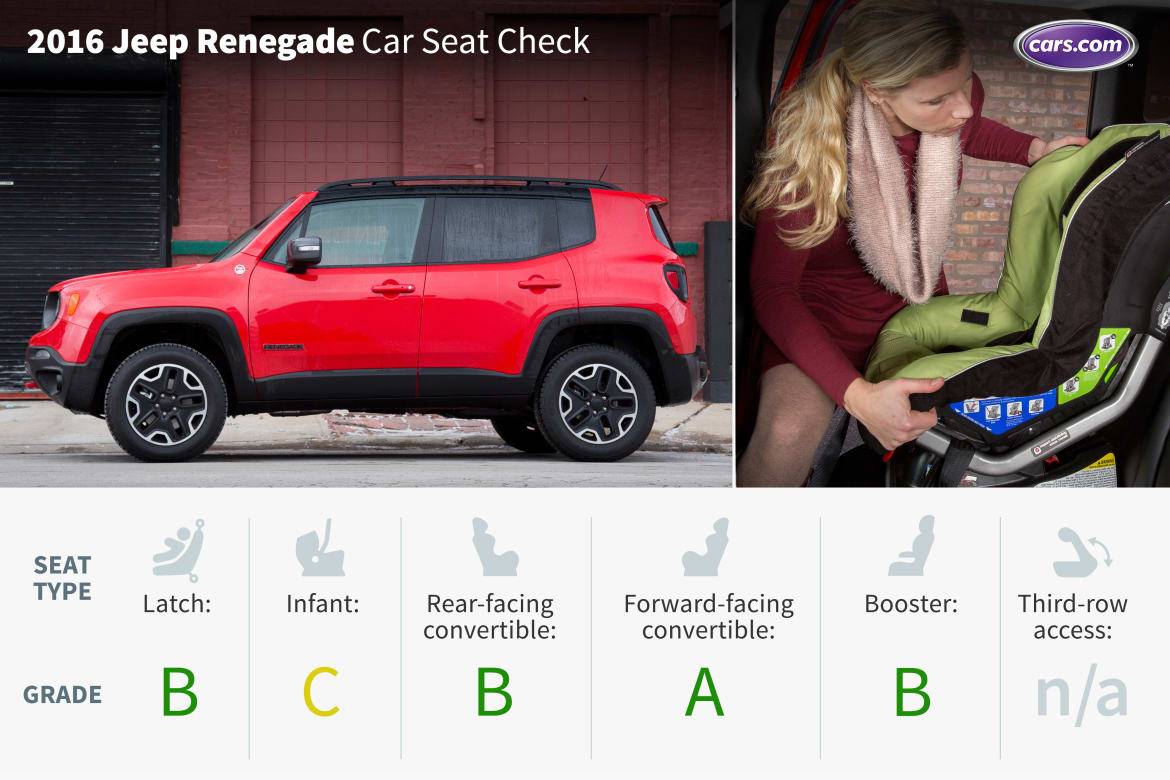
CARS.COM — Jeep’s tiniest SUV stands out from the crowd with its boxy, rugged styling, and the Trailhawk model we tested for this Car Seat Check stands out even more thanks to its serious off-road abilities. The Renegade Trailhawk is equipped for off-roading with 8.7 inches of ground clearance and a four-wheel-drive system with a low range. What it’s less adept at is hauling kids in car seats; rear-facing car seats need more room.
How many car seats fit in the second row? Two
What We Like
- The forward-facing convertible installed easily after we raised the head restraint. There are three tether anchors on the rear seatbacks near the cargo floor. They’re clearly marked and easy to connect to.
- Our high-back booster seat fit well after we raised the head restraint.
What We Don’t Like
- The Renegade has two sets of lower Latch anchors in the outboard seats; the leather cushions are stiff, so it takes a bit of muscle to connect with the anchors, especially with the infant seat’s thin, hooklike connectors.
- To fit the rear-facing infant seat, we had to move the front passenger seat forward several inches. This left our 5-foot-8 tester’s knees touching the glove box.
- The rear-facing convertible installed easily, but we had to move the front passenger seat forward a small amount. Our 5-foot-8 tester could have used more legroom to be comfortable.
- The backseat’s seat belt buckles are on stable bases, which we like for easy buckling, but they’re recessed into the seat bottom cushion. This makes it difficult for younger children in boosters to buckle up independently.
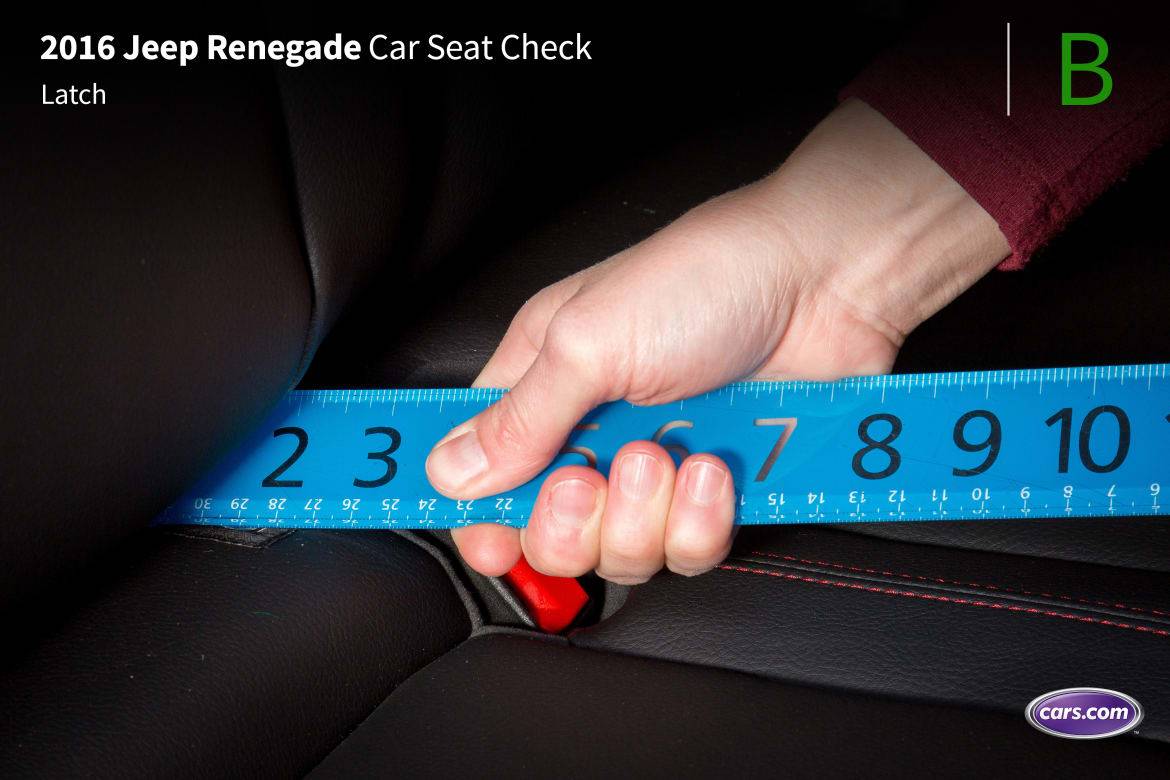
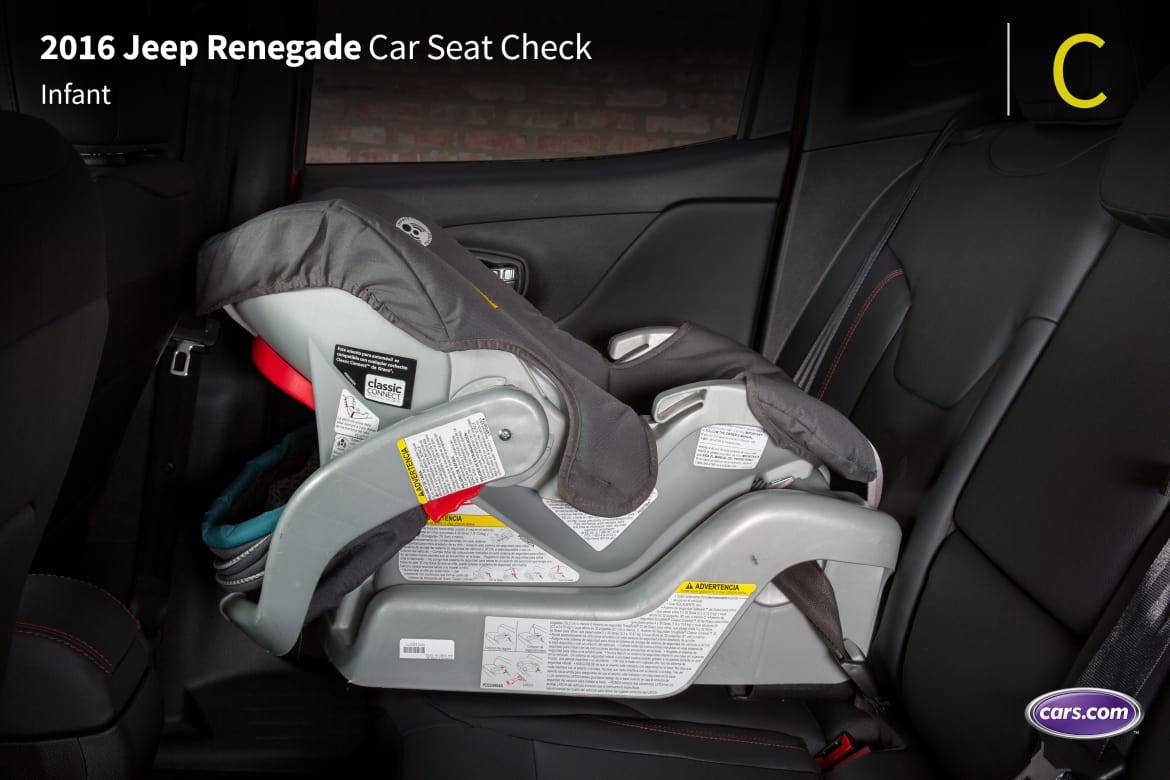
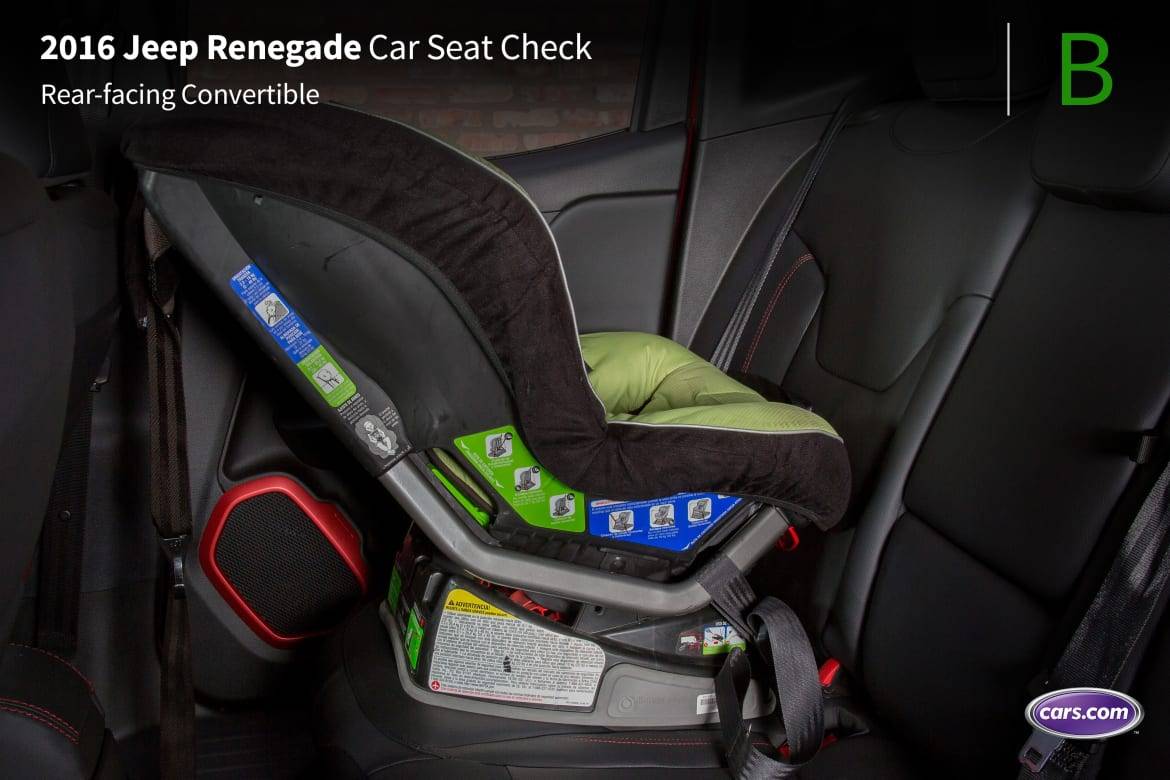









Grading Scale
A: Plenty of room for the car seat and the child; doesn’t impact driver or front-passenger legroom. Easy to find and connect to Latch and tether anchors. No fit issues involving head restraint or seat contouring. Easy access to the third row.
B: Plenty of room. One fit or connection issue. Some problems accessing third row when available.
C: Marginal room. Two fit or connection issues. Difficult to access third row when available.
D: Insufficient room. Two or more fit or connection issues.
F: Does not fit or is unsafe.
About Cars.com’s Car Seat Checks
Editors Jennifer Geiger, Jennifer Newman and Matt Schmitz are certified child safety seat installation technicians.
For the Car Seat Check, we use a Graco SnugRide Classic Connect 30 infant-safety seat, a Britax Marathon convertible seat and Graco TurboBooster seat. The front seats are adjusted for a 6-foot driver and a shorter passenger. The three child seats are installed in the second row. The booster seat sits behind the driver’s seat, and the infant and convertible seats are installed behind the front passenger seat.
We also install the forward-facing convertible in the second row’s middle seat with the booster and infant seat in the outboard seats to see if three car seats will fit; a child sitting in the booster seat must be able to reach the seat belt buckle. If there’s a third row, we install the booster seat and a forward-facing convertible. Learn more about how we conduct our Car Seat Checks.
Parents should also remember that they can use the Latch system or a seat belt to install a car seat, and that Latch anchors have a weight limit of 65 pounds, including the weight of the child and the weight of the seat itself.

News Editor Jennifer Geiger joined the automotive industry in 2003, much to the delight of her Corvette-obsessed dad. Jennifer is an expert reviewer, certified car-seat technician and mom of three. She wears a lot of hats — many of them while driving a minivan.
Featured stories
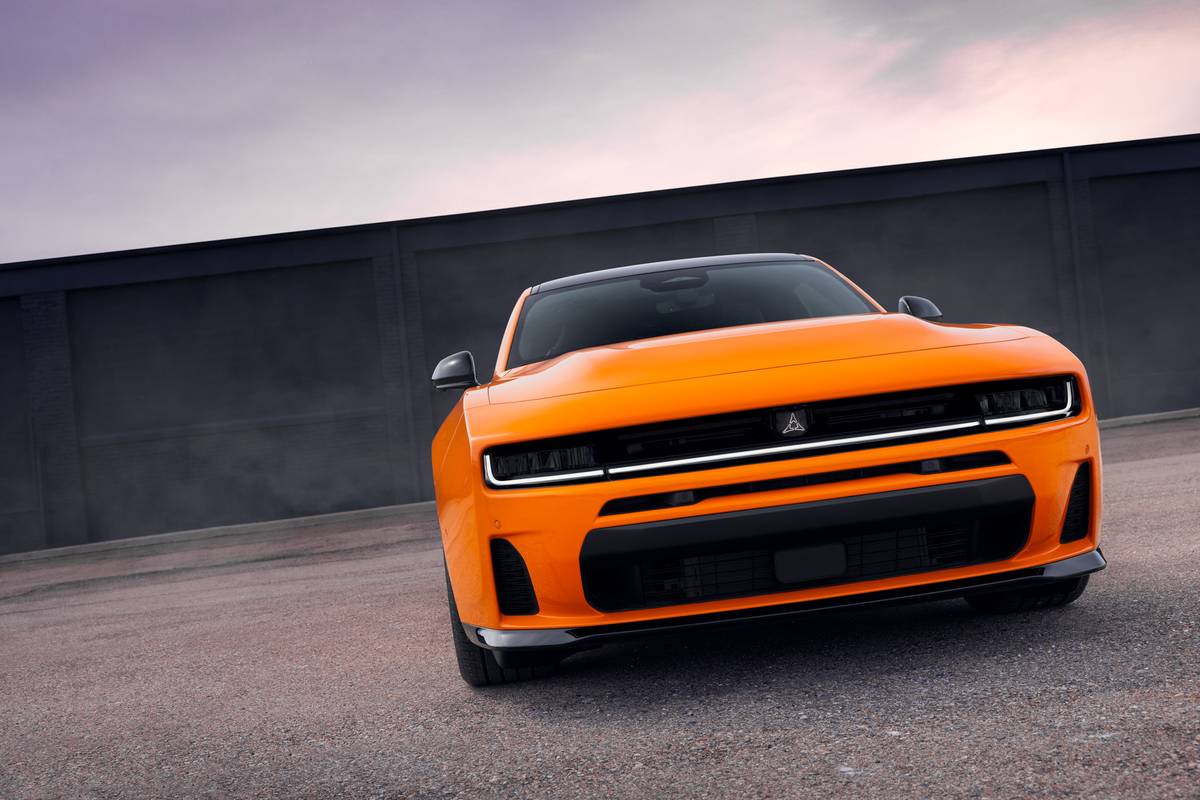
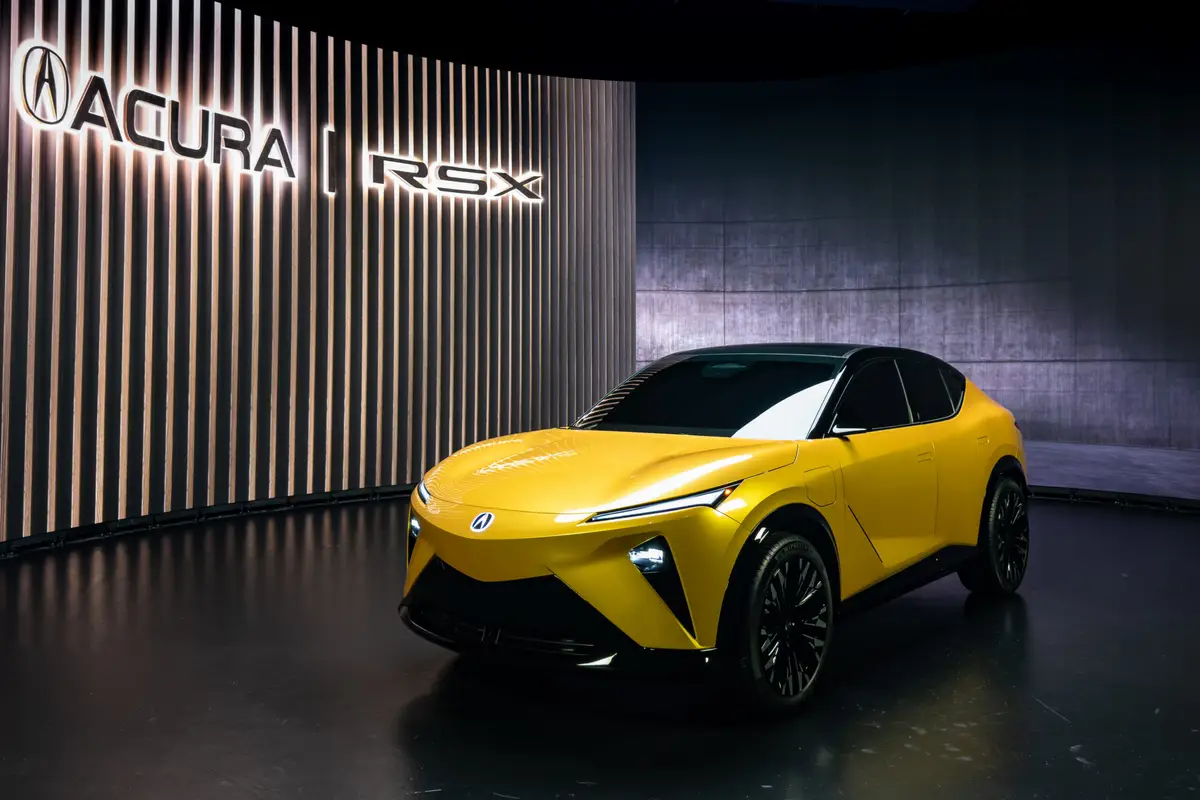

2025 Polestar 3 Review: Understated Electrified Luxury







